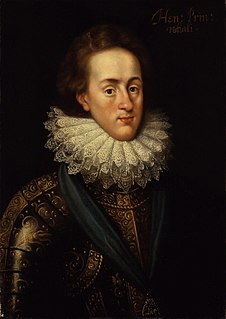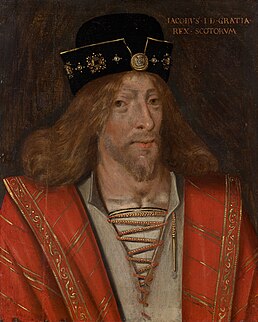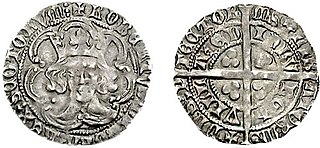 W
WCharles I was King of England, Scotland, and Ireland from 27 March 1625 until his execution in 1649. He was born into the House of Stuart as the second son of King James VI of Scotland, but after his father inherited the English throne in 1603, he moved to England, where he spent much of the rest of his life. He became heir apparent to the three kingdoms of England, Scotland, and Ireland in 1612 on the death of his elder brother Henry Frederick, Prince of Wales. An unsuccessful and unpopular attempt to marry him to the Spanish Habsburg princess Maria Anna culminated in an eight-month visit to Spain in 1623 that demonstrated the futility of the marriage negotiations. Two years later, he married the Bourbon princess Henrietta Maria of France.
 W
WCharles II was King of Scotland from 1649 until 1651, and King of Scotland, England and Ireland from the 1660 Restoration of the monarchy until his death in 1685.
 W
WEdward VII was King of the United Kingdom of Great Britain and Ireland and the British Dominions, and Emperor of India from 22 January 1901 until his death in 1910.
 W
WEdward VIII was King of the United Kingdom and the Dominions of the British Empire, and Emperor of India from 20 January 1936 until his abdication in December of the same year.
 W
WFrederick, Prince of Wales,, was heir apparent to the British throne from 1727 until his death from a lung injury at the age of 44. He was the eldest but estranged son of King George II and Caroline of Ansbach, and the father of King George III.
 W
WGeorge II was King of Great Britain and Ireland, Duke of Brunswick-Lüneburg (Hanover) and a prince-elector of the Holy Roman Empire from 11 June 1727 (O.S.) until his death in 1760.
 W
WGeorge IV was King of the United Kingdom of Great Britain and Ireland and King of Hanover from the death of his father, King George III, on 29 January 1820 until his own death ten years later. He had already been serving as Prince Regent since 1811, during his father's final mental illness.
 W
WGeorge V was King of the United Kingdom and the British Dominions, and Emperor of India, from 6 May 1910 until his death in 1936.
 W
WHenry Frederick, Prince of Wales was the eldest son and heir apparent of James VI and I, King of England and Scotland, and his wife Anne of Denmark. His name derives from his grandfathers: Henry Stuart, Lord Darnley, and Frederick II of Denmark. Prince Henry was widely seen as a bright and promising heir to his father's thrones. However, at the age of 18, he predeceased his father when he died of typhoid fever. His younger brother Charles succeeded him as heir apparent to the English, Irish and Scottish thrones.
 W
WJames I was King of Scots from 1406 to 1437. The youngest of three sons, he was born in Dunfermline Abbey to King Robert III and his wife Annabella Drummond. His older brother David, Duke of Rothesay, died under suspicious circumstances while being detained by their uncle, Robert, Duke of Albany. His other brother, Robert, died young. Fears for James's safety grew through the winter of 1405/6 and plans were made to send him to France. In February 1406, James was forced to take refuge in the castle of the Bass Rock in the Firth of Forth after his escort was attacked by supporters of Archibald, 4th Earl of Douglas. He remained there until mid-March when he boarded a vessel bound for France. On 22 March English pirates captured the ship and delivered the prince to Henry IV of England. The ailing Robert III died on 4 April and the 11-year-old James, now the uncrowned King of Scotland, would not regain his freedom for another eighteen years.
 W
WJames II was King of Scots from 1437 until his death in 1460.
 W
WJames III was King of Scots from 1460 until his death in battle in 1488. James was an unpopular and ineffective monarch owing to an unwillingness to administer justice fairly, a policy of pursuing alliance with the Kingdom of England, and a disastrous relationship with nearly all his extended family. It was through his marriage to Margaret of Denmark that the Orkney and Shetland islands were added to the territorial possessions of the Scottish crown.
 W
WJames IV was King of Scotland from 11 June 1488 until his death in battle in 1513. He assumed the throne following the death of his father King James III at the Battle of Sauchieburn, a rebellion in which the younger James played an indirect role. He is generally regarded as the most successful of the Stewart monarchs of Scotland, but his reign ended in a disastrous defeat at the Battle of Flodden. He was the last monarch from Great Britain to be killed in battle.
 W
WJames V was King of Scotland from 9 September 1513 until his death in 1542, which followed the Scottish defeat at the Battle of Solway Moss. His only surviving legitimate child, Mary, Queen of Scots, succeeded him when she was just six days old.
 W
WJames VI and I was King of Scotland as James VI from 24 July 1567 and King of England and Ireland as James I from the union of the Scottish and English crowns on 24 March 1603 until his death in 1625. The kingdoms of Scotland and England were individual sovereign states, with their own parliaments, judiciaries, and laws, though both were ruled by James in personal union.
 W
WRobert II was King of Scots from 1371 to his death in 1390. He was the first monarch of the House of Stewart as the son of Walter Stewart, 6th High Steward of Scotland, and of Marjorie Bruce, daughter of the Scottish king Robert the Bruce by his first wife Isabella of Mar.
 W
WRobert III, born John Stewart, was King of Scots from 1390 to his death. He was known primarily as the Earl of Carrick before ascending the throne aged around 53 years. He was the eldest son of Robert II and Elizabeth Mure and was legitimised with the marriage of his parents in 1347.
 W
WThe title of High Steward or Great Steward is that of an officer who controls the domestic affairs of a royal household. In the 12th century King David I of Scotland gave the title to Walter fitz Alan, a nobleman from Brittany, whose descendants adopted the surname "Steward", later "Stewart" and later founded the royal House of Stewart. A junior branch of the Stewart family descended from the younger son of Alexander Stewart, 4th High Steward of Scotland (d.1283), namely "Stewart of Darnley", paternal ancestors of King James I & VI, lived for several generations in France, when the name became spelt in the French manner "Stuart" and "Dernelé". In 1371 Robert Stewart, 7th High Steward of Scotland inherited the throne of Scotland via his mother and became King Robert II of Scotland, when the title or office of High Steward of Scotland merged into the crown. However it was re-granted by the monarch to his elder son and heir apparent, together with the titles Duke of Rothesay and Baron of Renfrew. Thus, currently, The Prince of Wales is High Steward of Scotland, sometimes known as the Prince and Great Steward of Scotland.
 W
WAlexander Stewart, also known as Alexander of Dundonald, was 4th hereditary High Steward of Scotland from his father's death in 1246.
 W
WJames Stewart was the 5th Hereditary High Steward of Scotland and a Guardian of Scotland during the First Interregnum.
 W
WJames Francis Edward Stuart, nicknamed The Old Pretender by Whigs, was the son of King James II and VII of England, Scotland and Ireland, and his second wife, Mary of Modena. He was Prince of Wales from July 1688 until, just months after his birth, his Catholic father was deposed and exiled in the Glorious Revolution of 1688. James II's Protestant elder daughter, Mary II, and her husband, William III, became co-monarchs and the Bill of Rights 1689 and Act of Settlement 1701 excluded Catholics from the English throne and, subsequently, the British throne.
 W
WAlan fitz Walter was hereditary High Steward of Scotland and a crusader.